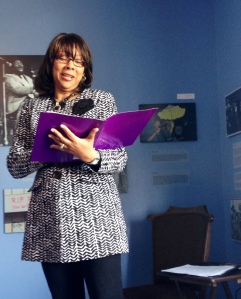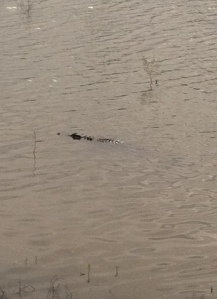It’s not uncommon to see a tour bus or limousine with tinted windows wind its way slowly through the Lower Ninth Ward.

Often times you’ll see cameras dangling from car windows while tourists snap photos of boarded up houses and slabs of concrete where houses used to be. There’s no question that much of the infrastructural state of this community (eight years after the devastating levee failure) is nothing short of abhorrent. But these tours are voyeuristic and highly offensive to local residents, and according to WDSU “On Your Side,” they’re often illegal.
Lower Ninth Ward resident, Chasity Stinnett, told WDSU that at times she feels “paranoid, on display and uneasy about letting her children play outside.” Stinnett says, “It’s just a show-and-tell, I mean, we’re not animals, you know.”

According to the news clip, James Gray of the New Orleans City Council has pledged to support the Lower Ninth Ward residents who want bus tours out of their community. He told WDSU that “people here have clearly indicated that they don’t want to be like animals in a zoo, and there’s an ordinance to protect them, and we’re going to… see to it that the police department enforces that ordinance.”
This has been said before. The Lower Ninth Ward has a long history of community activism, and this social justice issue proves no different. There’s nothing new about local residents speaking out against the damaging impact of disaster tourism.

In addition to organizing and reaching out to public officials, residents have fought back by erecting powerful signs, directed specifically at tourists (like the one pictured). And just last year, Travelers Today published an article featuring local resident Vanessa Gueringer, who told the AP, “We’re fed up and tired of them coming through the neighborhood like we’re some sideshow…After all the suffering we have been through, we deserve more respect than this.” As tour companies continue to exploit the Lower Ninth Ward for profit, concerns of local residents are being ignored, and city ordinances (claiming to protect local residents) are going entirely unenforced.
Once it’s open, the Living Museum is intended to serve and honor local residents first and foremost, but it also has the potential to direct (what seems like) inevitable disaster tourism away from the voyeuristic and damaging practice of bus tours, to a place where residents’ voices are actually heard. We hope for the Living Museum to operate as a place where visitors can learn about and honor the rich history of this community, straight from the mouths of local residents, without endorsing illegal “Show-and-Tell” bus tours or burdening residents to tell their stories again and again.
As local activist Jenga Mwendo so eloquently put it in her article Jungleland, Really? A Lower Ninth Ward Response, “For every vegetation covered lot, there is a story, and much of the story is hard working people trying to make the historic Lower 9th Ward whole again.” It’s the Lower Ninth Ward Living Museum’s mission to make sure these powerful stories are honored and heard, while doing whatever we can to minimize the negative footprint of disaster tourism.
For more information on disaster tourism in the Lower Ninth Ward, check out the entire WDSU clip here, and make sure to read Jenga Mwendo’s powerful response article in full at the Center for Sustainable Engagement and Development’s blog.



 For the past two years, more than forty residents have graciously allowed us to videotape and/or audio record their life experiences in the name of preserving and sharing the Lower Ninth Ward’s history. Cameras have provided us with the invaluable opportunity to document generations of stories that are too easily forgotten. It’s safe to say that the Living Museum couldn’t exist without the ability to record oral histories of Lower Ninth Ward residents.
For the past two years, more than forty residents have graciously allowed us to videotape and/or audio record their life experiences in the name of preserving and sharing the Lower Ninth Ward’s history. Cameras have provided us with the invaluable opportunity to document generations of stories that are too easily forgotten. It’s safe to say that the Living Museum couldn’t exist without the ability to record oral histories of Lower Ninth Ward residents. Throughout history the camera has often been used as a weapon – to exploit, colonize, invade, twist and objectify. Even the words associated with the camera are inherently violent: to “shoot” a scene and to “capture” an image. As Susan Sontag said, “to photograph people is to violate them, by seeing them as they never see themselves, by having knowledge of them that they can never have; it turns people into objects that can be symbolically possessed.” Whether or not the camera is used with good intentions, the act of video taping inherently involves issues of ownership and representation.
Throughout history the camera has often been used as a weapon – to exploit, colonize, invade, twist and objectify. Even the words associated with the camera are inherently violent: to “shoot” a scene and to “capture” an image. As Susan Sontag said, “to photograph people is to violate them, by seeing them as they never see themselves, by having knowledge of them that they can never have; it turns people into objects that can be symbolically possessed.” Whether or not the camera is used with good intentions, the act of video taping inherently involves issues of ownership and representation.

















